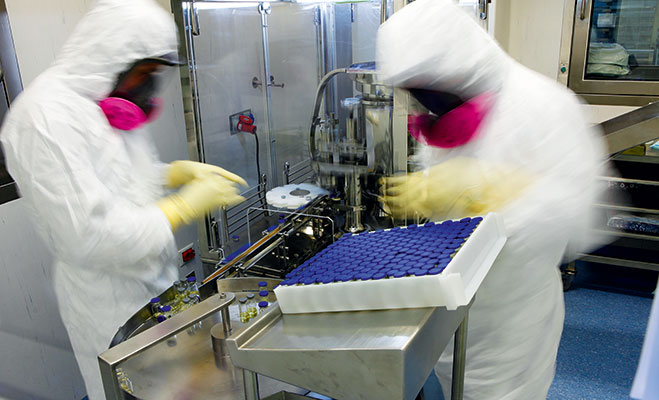Chilean pharma pushes emerging markets
CFR Pharmaceuticals has spent the past two decades expanding operations from Chile to the rest of Latin America

Ninety years ago, Nicolás Weinstein Rudoy, a pharmaceutical chemist who descended from Ukrainian immigrants, founded a drugstore in Santiago, Chile. Today that drugstore has evolved into a leading pharmaceutical company in Latin America, with operations in 15 countries in the region, as well as in Vietnam, Canada and the UK, with ambitious plans for expansion into other emerging markets.
In May 2011, CFR Pharmaceuticals’ initial public offering was the year’s most successful operation in Chilean capital markets, with an oversubscription rate of more than nine times, and saw a great deal of interest from foreign investors. The company raised $370m, and its share price grew 43.6 percent by the end of the year. But what is behind CFR’s success, and what drives the interest that investors have shown in the company’s future?
A unique position
CFR Pharmaceuticals is the only publicly traded, pure-play pharmaceutical company in Latin America. The company’s solid presence in the region, coupled with its effective combination of organic and inorganic growth, makes it an attractive and unique investment opportunity. Historically, the pharmaceutical industry has not been particularly sensitive to economic cycles, even boasting sustained growth during the financial crisis of 2008 and 2009. Moreover, CFR’s focus is on a region which offers above-average growth, even for this industry – with an eye to expanding into other emerging markets with high growth potential.
“Today, emerging markets are the hot topic, because that’s where the growth is, and these markets are especially attractive now that they seem to have greater political stability. At CFR we have been targeting emerging markets for the last 20 years, ever since we first started our international expansion throughout Latin America,” states Alejandro Weinstein Manieu, the company’s chief executive officer, who also happens to be the grandson of its founder.
Looking forward, most of the growth within the pharmaceutical industry will come from emerging markets, due to a combination of factors associated with economic development, such as improvements to medical standards and an expanding middle class with better access to healthcare. At the same time, longer life expectancies will result in more people developing serious diseases such as cancer, and increased affluence and urbanism may lead to a higher incidence of problems such as heart disease, which are traditionally associated with rich countries.
CFR’s business model is well suited for emerging markets, with its emphasis on innovation, flexibility and execution. The company’s highly trained sales force – over 1,600 medical reps who log more than three million doctor visits per year and distribute around 100m medical samples – is another key part of its strategy in these markets, where healthcare regulation is still evolving; greater emphasis is placed on trust and quality, and doctors now rely more on brand reputation.
Another fundamental part of the company’s strategy lies in being the first to launch new products – getting drugs onto the market even before larger multinational pharmaceutical companies. This is something that CFR has achieved in nearly 30 percent of its product launches over the past three years, and it constitutes a considerable competitive advantage, differentiating the company from its peers by being the first to offer innovative treatments to doctors and patients. In 2011, CFR launched more than 220 products, nearly 50 percent more than in 2010, including new treatments in markets where they were not previously available, as well as extensions of product lines that had already been launched.
Furthermore, the company has 200 new products in its development pipeline, as well as more than 700 pending product registration requests that, once approved, will become part of CFR’s product portfolio.
CFR also possesses diverse manufacturing capabilities strategically positioned throughout Latin America, allowing the company to tailor production to different markets. With GMP-approved manufacturing facilities located in Chile, Peru, Colombia and Argentina, the company can distribute its products all over the region, and even to such countries as Vietnam and Thailand. Years of experience have allowed the company to develop an understanding of the markets in which it operates, and this insight is another competitive advantage for CFR. By recognising the similarities and trends across countries, the company is able to identify fresh growth opportunities and replicate its past successes in new markets.
Reinforcing growth
In the 1990s the company began to expand its operations beyond Chile and into the rest of Latin America, gradually growing in each of these markets, either through greenfield operations or joint ventures. CFR is now looking to accelerate its growth through acquisitions, and this will be the primary investment focus for the proceeds from the recent IPO. In fact, since the IPO the company has announced three new transactions, in Vietnam, Canada and India.
“Just to give an example, Vietnam is a market whose regulatory framework is very similar to that of Latin America, and where the pharmaceutical industry exhibits double-digit growth. It is an ideal jumping-off point for the rest of southeast Asia: subsequently we can export our products there from Latin America, and at an excellent price,” notes Weinstein.
CFR’s markets are highly fragmented, with multiple small players, but the company is well positioned in these markets and should be able to lead consolidation within the sector. The main challenge will be to integrate its new acquisitions. Although CFR’s recent experience in this area has been very positive – its operations in Colombia, Vietnam and Argentina are now fully owned – expanding further into additional markets poses an even greater challenge. If the company succeeds in this new phase, it will have made the leap from being a leader in the Latin American pharmaceutical industry to being a leader in global emerging markets.













